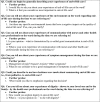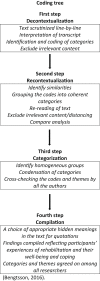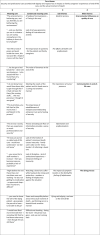Family caregivers' experiences of end-of-life care in the acute hospital setting. A qualitative study
- PMID: 34382701
- PMCID: PMC9545473
- DOI: 10.1111/scs.13025
Family caregivers' experiences of end-of-life care in the acute hospital setting. A qualitative study
Abstract
Background: Acute hospital settings are generally not considered adequate places for end-of-life care, but terminally ill patients will continue to die in acute medical wards in the unforeseeable future.
Aim: The aim of this study was to investigate family caregivers' experiences of end-of-life care in an acute community hospital in Iceland.
Methods: Fifteen in-depth qualitative semi-structured interviews were conducted with participants who had been primary caregivers. The transcribed interviews were analysed using thematic content analysis.
Findings: Findings indicated that the acute hospital setting is not a suitable environment for end-of-life care. Effective communication and management of symptoms characterised by warmth and security give a sense of resilience. Three main themes emerged: (1) Environmental influences on quality of care; (2) Communication in end-of-life care; (3) The dying process. Each of the themes encompassed a variety of subthemes.
Conclusions: Findings suggest that effective communication is the cornerstone of quality of care in the acute hospital environment and essential for establishing a sense of security. The severity of symptoms can deeply affect family caregivers' well-being. Acknowledging and appreciating the meaning of respect and dignity at the end-of-life from family caregivers' perspective is vital.
Keywords: acute hospital settings; bereavement; communication; end-of-life care; environment; family caregivers; grief; palliative care.
© 2021 The Authors. Scandinavian Journal of Caring Sciences published by John Wiley & Sons Ltd on behalf of Nordic College of Caring Science.
Conflict of interest statement
The authors declare that they have no conflict of interest.
Figures
References
-
- World Health Organization . WHO ‐ Definition of Palliative Care. 2018. https://www.who.int/health‐topics/palliative‐care (last accessed 20 July 2021).
-
- Ahmedzai SH, Costa A, Blengini C, Bosch A, Sanz‐Ortiz J, Ventafridda V, et al. A new international framework for palliative care. Eur J Cancer. 2004;40:2192–200. - PubMed
-
- Tsuneto S. Past, present, and future of palliative care in Japan. Jpn J Clin Oncol. 2013;43:17–21. - PubMed
MeSH terms
LinkOut - more resources
Full Text Sources




